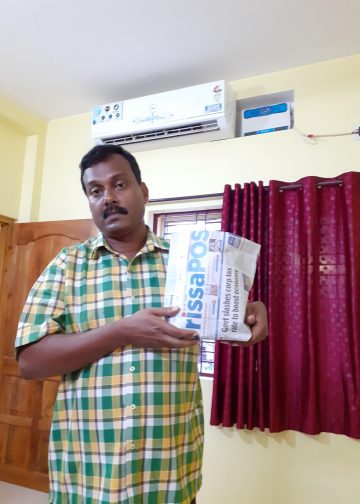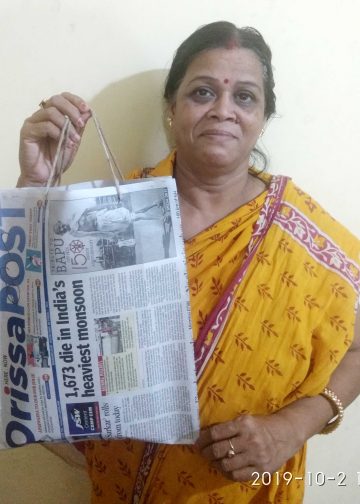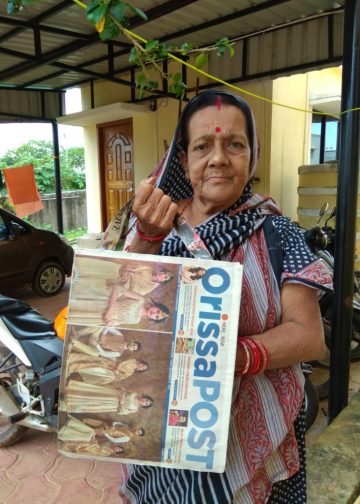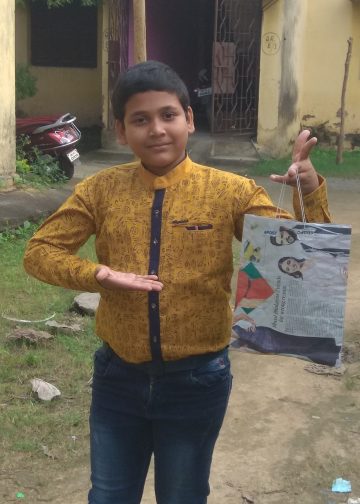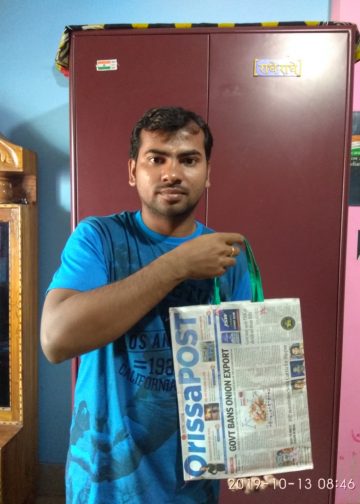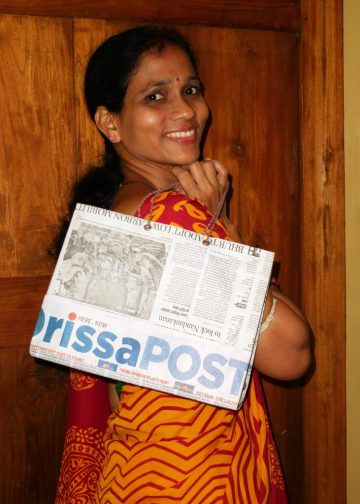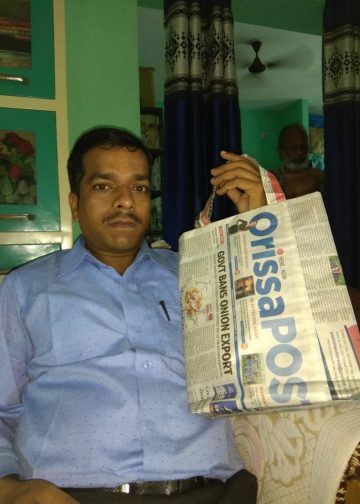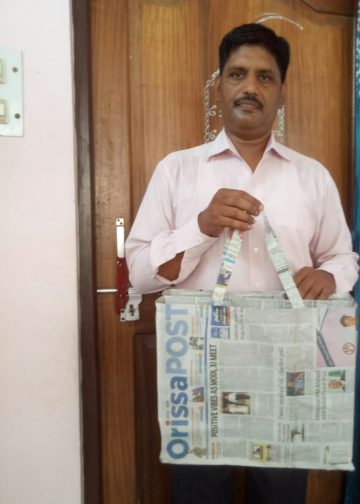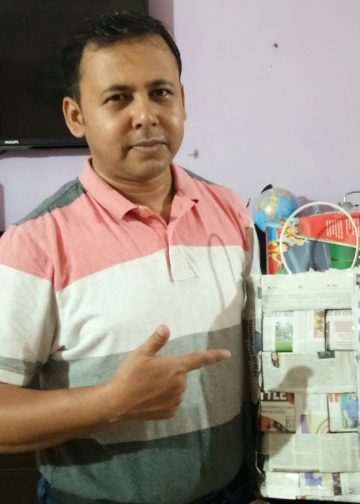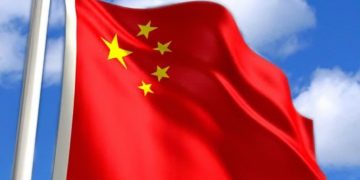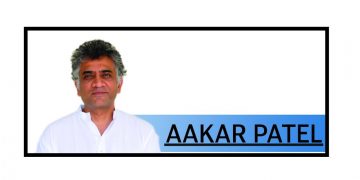SHABIHA NUR KHATOON, OP
Scholars opine that while it would be inaccurate to categorise the Paika Rebellion as the first war of independence, it certainly was an early flashpoint in the long history of
anti-colonial uprisings spearheaded by subalterns desperate to shake off economic oppression and political servitude
The First War of Independence is a term predominantly used in India to describe the Revolt of 1857 or the Sepoy Mutiny, which resulted in the end of the British East India Company rule and was replaced by the British monarchy which came to be known as the British Raj. The British termed it an armed rebellion or uprising while the Indians call it the First War of Independence.
The term, First War of Independence, was popularised by Vinayak Damodar Savarkar in his book The History of the War of Indian Independence. The first Prime Minister of India Jawaharlal Nehru insisted on using the term First War of Independence and thus it was officially adopted by the government of India.
Exactly 200 years ago, Orissa was the stage of a fierce revolt against British rule. The Paika Bidroha (Paika Rebellion) of 1817 shook the foundations of British rule in the eastern part of India. The Paikas were the warriors of Khurda. They were awarded vast plots of land by the kings for their services. During peacetime, the Paikas performed the role of policemen, and during war, morphed into warriors for their kings.
In the last 70 years, there has been negligible discussion about the Paika rebellion and its role in the subaltern anti-colonial movement. However, it was only this year that the Orissa government has claimed that the spontaneous rebellion be accorded the historical status of the first war of independence. Naveen Patnaik’s letter to Rajnath Singh, dated July 19, reads thus: “Paika Bidroha eminently qualifies to be considered as the first war of independence of the country not simply because it predates the “Sepoy Mutiny” by 40 years but due to its very nature and characteristic feature”.
Chandi Prasad Nanda, professor of history at Ravenshaw University, says: “The demand for an alternative ceremonial date as in the present claim of 1817 in the national calendar as far as 19th century anti-colonial popular insurgency is concerned illuminates the need to reassess the dominant paradigms of social histories of India including histories and commemorations of 1857 and a host of issues relating to hitherto underrepresented social categories, and voices of overlooked regions inherent in such perspectives.

“More than the issue of local versus national, what is more crucial and engaging in the debate between 1817 vs 1857 is how this question entails alternative modes of revisiting history through exploration of folk songs and tales, vernacular literature, culture and tradition of the region, thereby releasing space of popular, vernacular and anti-elite history and claims and ways of commemorations which contest existing knowledge of Indian nationalism.”
“The question why should one be passionate about celebrating 1857 as the first war of independence, and why not the Vellore, Paika, or the Santhal or the Moplah, or for that matter numerous other uprisings, is obvious to evoke deeper engagement.”
“The diverse concerns underlying the theme of 1857,” he says, “certainly raises questions about how the past – and 1857 in particular – circulates in popular memory. This issue pertinently remains tied up with questions of how democracy and mass media influence each other. But the debate takes on a particular form in India, and especially so when it comes to remembering 1857. The business of remembering 1857 has always split Indians, one could say.”
Nanda explains: “Colonialism formally entered Orissa in September 1803. Colonel Harcourt marched virtually unchallenged from Madras to Puri, and faced only feeble Maratha opposition onward to Cuttack. The following year, the British razed Khurda’s Barunei fort by cannon, arrested the king, Gajapati Mukund Dev II, and banished him to Puri. Over the next several years, as the British went about introducing new revenue settlements in Orissa, several of the original Oriya proprietors faced ruin, and land was transferred to ruthless Bengali absentee landlords, often for a pittance.
“The British control over salt — which had pre-1803-4 origins, but was extended to coastal Orissa in 1814 — also meant increased hardship for the people in the hills. There is evidence of raids on boats of salt agents near Puri during this period.
“The establishment of colonial rule and new land revenue settlements led to the Paikas losing their estates. In 1817, some 400 Kondhs descended from the Ghumusar area to rise in revolt against the British. Bakshi Jagabandhu Bidyadhar Mohapatra Bharamarbar Rai, the highest-ranking military general of Mukund Dev II, and erstwhile holder of the lucrative Rodanga estate, led an army of Paikas to join the uprising of the Kondhs.
“The Paikas set fire to government buildings in Banapur, killed policemen and looted the treasury and the British salt agent’s ship docked on the Chilika. They then proceeded to Khurda and killed several British officials. Over the next few months, the Paikas fought bloody battles at several places, but the colonial army gradually crushed the revolt.” Bakshi Jagabandhu escaped to the jungles, and stayed out of reach of the British until 1825, when he finally surrendered under negotiated terms.
“Many of these uprisings in Orissa were led by propertied sections whose position was undermined by colonial interventions. Nevertheless, they mobilised large sections of peasants, tribals and outcastes against the British. These sections had been angered by the disruptions and dislocations caused by the colonial agrarian settlements which had seriously interfered with their lives and undermined their existence,” Nanda says.
Pritish Acharya, professor of history at the Regional Institute of Education, says the Paika Rebellion is a local uprising and discusses the factors responsible for the insurrection in colonial India.
“It’s a local urge and the reasons are not far too seek, primarily the salt trade. British control over salt had pre-1803-1804 origins. Another major factor was the demonetisation of currency by the British government in Orissa in 1817 that triggered the rebellion. Earlier, Kaudi (conch) was regarded as the currency during Maratha rule in Orissa. After the East India Company occupied the state in 1803, some changes were made in governance. The British government imposed tax on the cess-free land enjoyed by the Paika community and lowered the value of Kaudi in order to introduce silver coin as the currency in the state. With the introduction of the new currency and low value of previously existing Kaudi, the prices of foods and other products increased. Subsequently, the Kaudi was scrapped and the common people fell prey to inflation. It sparked resentment among the soldiers against the British government that snowballed into a movement.
“As the availability of silver coins was minimal, it caused problems with paying taxes. Besides, the government’s revenue policy, restriction on salt production and sale were other factors that stoked resentment,” Acharya adds.
“Nationalism is a process which grew during a long period of time and in 1817, when people were fighting British rule, they were fighting because imperial rule was oppressive and later it took the form of nationalism; but that doesn’t mean that in 1817 they were fighting for India’s independence. British rule was established in 1757 after the Battle of Plassey and whoever had been under British rule had been reacting because it had brought many new rules which were oppressive and exploitative. As far as Sepoy Mutiny is concerned, it was the culmination of all those early revolts. The 1817, Paika Bidroha is the miniature of the 1857 uprising. The conglomeration of all local revolts could be seen in the revolt of 1857.”
Retired professor of history at Ravenshaw University, Kharavela Mahanti says: “It was purely a local thing, there was no nationalism involved. The historical baggage of a national movement is an addendum, which is not true. There had been such movements much before the Paika Rebellion. A student of history would never subscribe to the view, which is absurd.
“The state government might be proposing Paika Rebellion as the first war of independence but I feel it’s a political agenda. As a student of history, if you ask me, I can never subscribe to the view. The Paika Rebellion didn’t cover the whole of Orissa; it was only confined to one place, Khurda. So how it could become a national movement for the Oriyas and for the country? It was an uprising against the British who were snatching the lands of farmers. Had those plots been returned to Bakshi Jagabandhu, the rebellion would have been called off. His own interests were hampered because his lands were taken away. There was all evidence that he was having secret confabulations with the British officials to spare him.”
“The Revolt of 1857 or Sepoy Mutiny is not the first war of Independence because it was a sporadic movement, all sections of the society didn’t participate in the movement, and it just gave a spur to Indian nationalism. It was a sort of a mutiny among the soldiers and a few people participated in the movement. It didn’t have the support of the rest of the country. In fact the whole of South India was not there in the picture. Those whose personal interests had been hampered like the Prince of Sambalpur and Tatya Tope rose up in revolt. The Doctrine of Lapse had been invoked and their interests had been hampered. The rebels were united under one banner and sought to forge unity by making Bahadur Shah Zafar their leader, India’s last Mughal emperor who had been given a raw deal by the British,” he says.
The seeds of a countrywide anti-colonial movement were sown by Gandhi long after 1817. However, most resistance movements in the 19th century were spearheaded by tribal people. It was under the leadership of Gandhi that the concept of nationalism crystallised.








